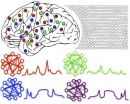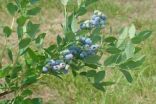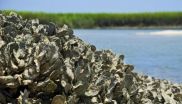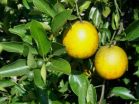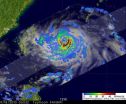(Press-News.org) Patients who seek a second surgery to revise their rhinoplasty often do so because they are dissatisfied with the symmetry of their nasal tip and because they experience nasal obstructions, according to a report in the September/October issue of Archives of Facial Plastic Surgery, one of the JAMA/Archives journals. Surgeons who examine revision rhinoplasty candidates cite slightly different findings than patients, suggesting that communication about nasal aesthetics could be improved.
Approximately 5 percent to 15 percent of patients who have rhinoplasty [plastic surgery on the nose] seek revision surgery, according to background information in the article. "To optimize patient satisfaction from revision rhinoplasty, the surgeon must be keenly aware of the functional and cosmetic deficiencies that the patient considers most problematic," the authors write.
Kathy Yu, M.D., of Columbia College and Cornell University, New York, and colleagues collected questionnaires from 104 consecutive patients seeking revision rhinoplasty between Jan. 1, 2008, and June 30, 2009. Patients ranked the top three reasons for seeking revision surgery, reported any symptoms of nasal obstruction and listed the reasons they did not return to their primary surgeon. The surgeon who consulted the patients also reported three primary aesthetic findings along with objective indications of nasal obstruction in patients who reported symptoms.
Most patients reported seeking revision surgery because of tip asymmetry, difficulty breathing or nasal blockage, or a crooked middle third of the nose. The most common aesthetic concerns cited by patients and surgeons were tip asymmetry, a crooked middle third and irregularities in the upper third of the nose.
An average of 79 percent of patient concerns were also identified by the surgeon. "The discrepancy between patient concerns and surgeon findings arose for a variety of reasons," the authors write. "One of the main reasons is the surgeon's use of a conventional set of anatomical boundaries, specifically regarding the upper vs. middle third of the nose. Patients often do not have intricate knowledge of nasal anatomy to properly distinguish between nasal thirds."
However, only 55 percent of the surgeon's findings were also noted by the patient. This may be because surgeons are critical of their own work or the work of other surgeons, or "owing to the more comprehensive review of nasal anatomy by the trained eye of the surgeon, who follows a systematic method of evaluating the nose against a classical standard," the authors write. "Patients, on the other hand, may have more subjective and varied opinions on their ideal appearance."
Of the 64 (62 percent) of patients who described having difficulty breathing or other experiences of nasal obstruction, 60 (94 percent) had objective physical findings related to obstruction.
"These findings emphasize the importance of physician awareness of patients' concerns, understanding the causes of postsurgical nasal obstruction and clearly explaining nasal aesthetics to patients seeking revision rhinoplasty," the authors conclude.
INFORMATION:
(Arch Facial Plast Surg. 2010;12[5]:291-297. Available pre-embargo to the media at www.jamamedia.org.)
Editor's Note: Please see the article for additional information, including other authors, author contributions and affiliations, financial disclosures, funding and support, etc.
Analysis of seagull droppings has revealed that one in ten carry 'superbug' bacteria, resistant to the last-resort antibiotic Vancomycin. Researchers writing in BioMed central's open access journal Proteome Science investigated 57 migratory seagull samples recovered from an island off the coast of Portugal.
Gilberto Igrejas from the University of Trás-os-Montes and Alto Douro, Portugal, worked with a team of researchers to carry out the study. He said, "We used a novel technique called proteomics to detect the maximum number of bacterial proteins which are thought to ...
Berkeley — When it comes to conducting complex tasks, it turns out that the brain needs rhythm, according to researchers at the University of California, Berkeley.
Specifically, cortical rhythms, or oscillations, can effectively rally groups of neurons in widely dispersed regions of the brain to engage in coordinated activity, much like a conductor will summon up various sections of an orchestra in a symphony.
Even the simple act of catching a ball necessitates an impressive coordination of multiple groups of neurons to perceive the object, judge its speed and trajectory, ...
SPRINGFIELD, MO—The American elderberry is showing promise as a profitable commercial fruit crop. Traditionally used for making jelly, juice, and wine, elderberry is becoming increasing important in North America's burgeoning "nutraceutical" industry. Historically, elderberries have mostly been harvested from the wild; researchers have made recently made efforts to select or develop improved cultivars. Increased interest and emerging markets are encouraging scientists to develop improved elderberry cultivars that yield consistent, superior production. Scientists from the ...
GRIFFIN, GA—Blueberry aficionados will soon have a tasty, colorful new variety for their backyard gardens. Blueberry experts D. Scott NeSmith and Mark K. Ehlenfeldt introduced 'Blue Suede™' in a recent issue of HortScience. The new southern highbush blueberry (Vaccinium hybrid) was released by the University of Georgia's College of Agricultural and Environmental Sciences, the University of Georgia Agricultural Experiment Station, and the U.S. Department of Agriculture–Agricultural Research Service. 'Blue Suede™' is targeted for sales to the home gardener market.
According ...
WEST LAFAYETTE, Ind. - A Purdue University-led research team has uncovered the chemical components of the adhesive produced by oysters, providing information that could be useful for fisheries, boating and medicine.
A better understanding of oysters' ability to stick together to form complex reefs would help those trying to boost the dwindling oyster population, aid in the creation of materials to keep boat hulls clean without harming the environment, and bring researchers one step closer to creating wet-setting adhesives for use in medicine and construction.
Jonathan ...
EAST LANSING, MI—When consumers visit garden centers in spring they will most likely buy flowering ornamental plants that are ready for their home gardens. Studies have shown that consumers favor plants that are already in flower rather than those that are "vegetative"—a preference that can present multiple challenges for commercial growers.
To satisfy consumers' wishes, producers of ready-to-flower ornamentals like bedding plants and perennials start growing crops far in advance of the spring buying season, often during the dark and short days of winter. When the days ...
Dust has been blowing into the Eastern Atlantic Ocean from Africa's Saharan Desert, and a NASA satellite captured some of that dust east of Tropical Storm Julia.
NASA's Moderate Resolution Imaging Spectroradiometer (MODIS) instrument on the Terra satellite captured a visible image of Tropical Storm Julia on Sept. 18 at 13:50 UTC (9:50 a.m. EDT) and noticed a large area of Saharan dust over the Atlantic Ocean, to Julia's east.
On Sept. 20 at 5 a.m. EDT, Julia was still holding on to tropical storm status with maximum sustained winds near 45 mph. Julia was located about ...
Hurricane Karl made landfall near Veracruz, Mexico on Friday, Sept. 17 and moved inland over Mexico's rugged terrain, which took the punch out of the storm. As Karl was moving into Mexico, NASA aircraft and NASA satellites were gathering data from this storm that jumped from a tropical storm to a Category 3 hurricane the day before.
Karl had maximum sustained winds of 115 mph when it made landfall on Friday afternoon, Sept. 17. That made Karl a Category three hurricane on the Saffir-Simpson scale, and a major hurricane to boot.
On that day, NASA's Genesis and Rapid ...
LAKE ALFRED, FL—Successful mechanical harvesting of perennial fruit crops requires efficient, economical harvesting systems that do not reduce trees' production life or diminish fruit quality. Most of the world's citrus is now harvested manually, but the use of efficient and lower-cost mechanical harvesting techniques is expected to increase in the next few years, especially in the large citrus plantations in Florida and Brazil. The citrus industry is ramping up efforts to extend the harvest season past June, when the following year's crop becomes large enough to be susceptible ...
Taiwan experienced a landfall and a soaking from Typhoon Fanapi, and NASA and JAXA's TRMM satellite noted a large area of very heavy rain in the system before it made landfall this weekend. NASA's Aqua and Terra satellites also captured impressive visible images of Fanapi just before the Taiwan landfall, and as it was making landfall in eastern China very early today.
The Tropical Rainfall Measuring Mission satellite known as TRMM captured an image of Typhoon Fanapi's rainfall on Sept. 18 at 0653 UTC (2:53 a.m. EDT) after the typhoon had intensified to 105 knots (~121 ...
